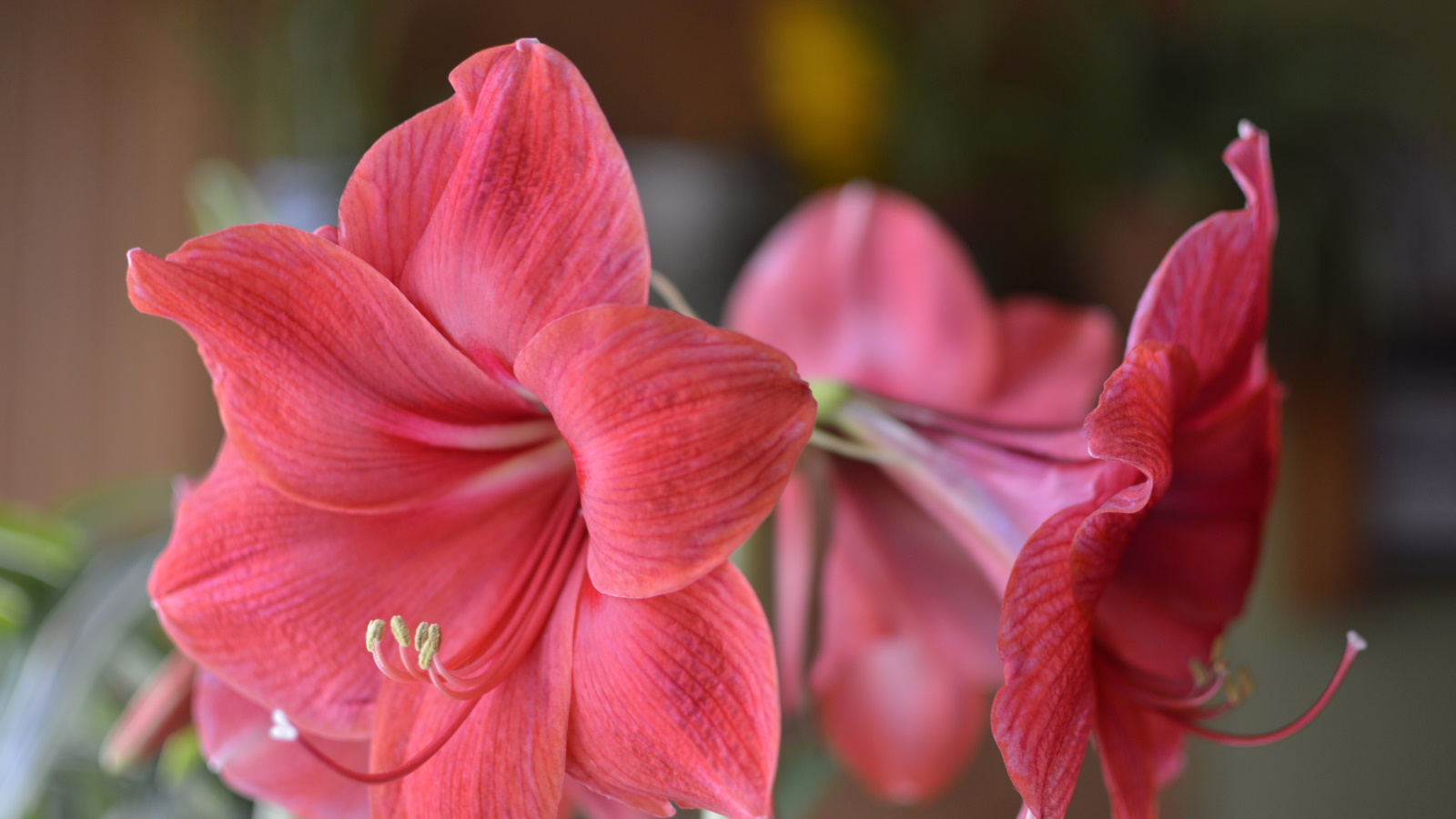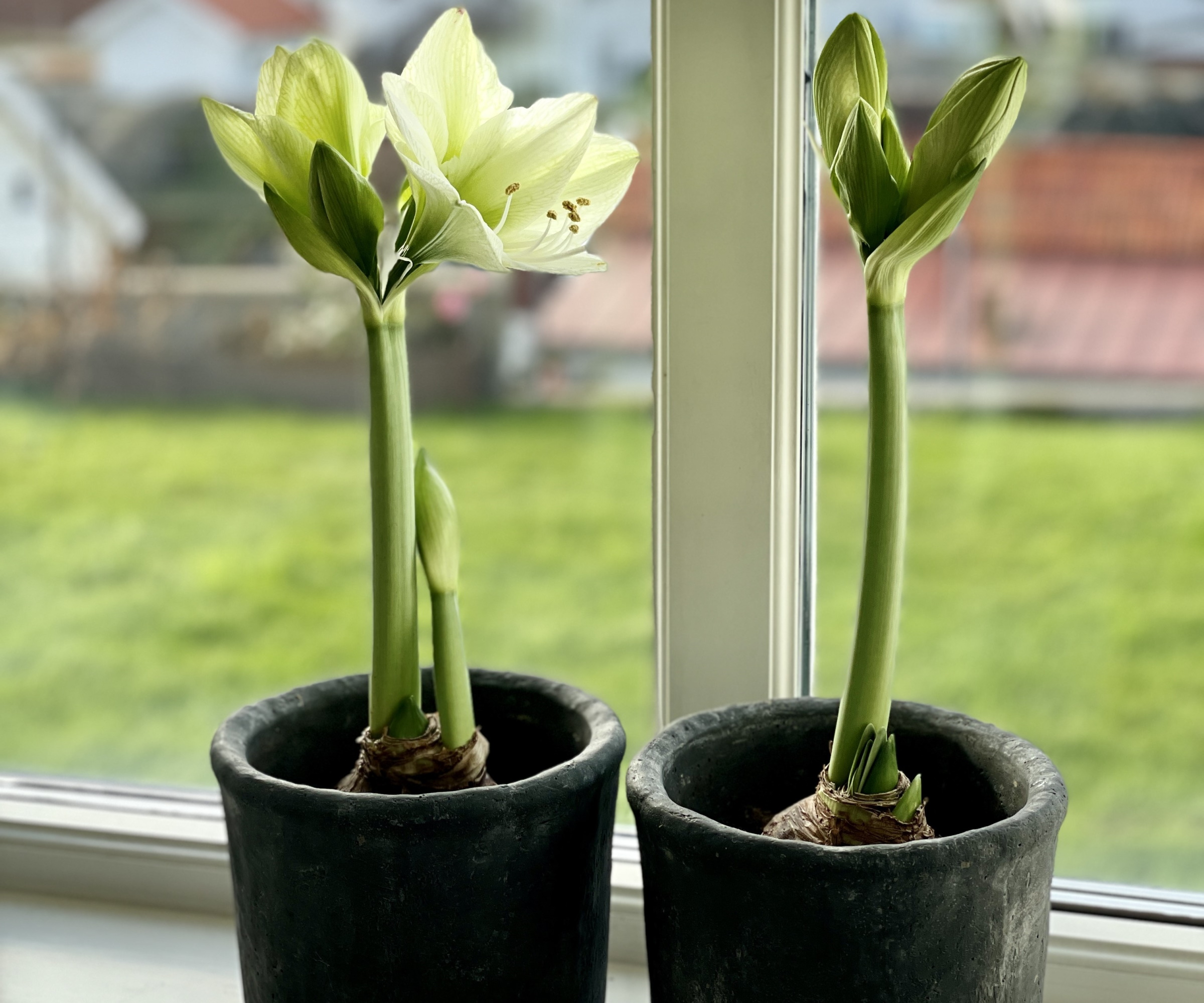When to cut back amaryllis leaves – for plants that will regrow the following year
By following a few simple steps, your amaryllis will flower again next year


For many, amaryllis blooms are associated with festive holidays and the end of the year. They have become increasingly popular due to their ability to bloom happily indoors at a time when natural color in the garden is scarce.
Amaryllis is the more commonly used name for Hippeastrum, a genus of flowering bulbs with huge variety, originating from the tropical and subtropical regions of South America. Bright in color, amaryllis flowers form trumpet and star-like shapes and can vary from pink, burgundy, peach to white, and everything in between.
If you plan ahead and plant amaryllis bulbs in October or November, you might just have flowers on Christmas Day, and at that time of year it is a joy to see these show-stopping flowers.
After flowering, in January and February, many discard of their amaryllis plants, considering them to be one-hit wonders. Tossed out with wrapping paper and the Christmas waste. However, amaryllis should be treated as a perennial bulb, and with proper care and attention, you can be sure of flowers the following year.
Discover how to care for your amaryllis, and learn when best to cut back the leaves after flowering. By following these simple tips, you can achieve robust growth and vibrant blooms year after year - a sustainable way to grow and care for amaryllis.

What to do with your amaryllis after flowering
Understanding how and when to cut back amaryllis after the holidays is key to ensuring you enjoy vibrant flowers next year. By following a few simple steps, you will give your amaryllis bulb the best chance of success.
Why is it important to provide the right care for your amaryllis?

It is important to care for your amaryllis in the correct way after blooms begin to fade. By removing spent flowers and focusing on healthy leaf growth, the plant's energy focuses on bulb development instead of producing seed.
Design expertise in your inbox – from inspiring decorating ideas and beautiful celebrity homes to practical gardening advice and shopping round-ups.
'This process is essential for replenishing the bulb's reserves,' says Rachel Bull, Head of Gardens at Homes & Gardens. 'By preventing the amaryllis plant from producing seed you encourage the plant to focus on bulb development, resulting in larger, more vigorous blooms the following year,' Rachel continues.
Gently twisting spent flowers will not damage the flower stalk, which is important. The flower stalk is capable of photosynthesis and so it will contribute to the production of energy. Leave the flower stem, as well as the leaves, until they turn yellow and wither.
Remember that amaryllis originate from tropical regions, and are not frost-hardy. 'They are tender plants,' Rachel says, 'so must remain in a frost-free, warm environment through winter months.'
During these weeks and months, allow the amaryllis to continue soaking up sunlight. Do not push the plant into a darkened corner once it finishes flowering, but equally, keep it away from direct sunlight.

Rachel is a gardening editor, flower grower and floral designer. Her journalism career began on Country Living magazine, sparking a love of container gardening and wild planting. After more than a decade writing for and editing a range of consumer, business and special interest titles, Rachel became editor of floral art magazine The Flower Arranger. She then trained and worked as a floral designer and stylist in London for six years, before joining the Homes & Gardens team.
When should you cut back your amaryllis leaves after flowering?

If you provide the right care for your amaryllis, watering and feeding through the winter, the leaves will continue to look healthy and you should not prune them until later in the year. Remember that the foliage is toxic to pets, so it is advised to keep your amaryllis out of reach of cats and dogs.
It is recommended that you apply a fertilizer once or twice a month, preferably a feed that is high in phosphorus, such as this indoor plant food from My Perfect Plants. This will give the bulb as much energy and goodness as possible, and the best chance of success with reflowering the following year. It will also keep the foliage looking healthy, a visible reminder not to prune before it is needed.
By spring, you will notice a change in the leaves. Once the leaves and stem begin to yellow and wither, this is the ideal time to prune your amaryllis. Regularly checking and inspecting your plant will help you determine when is the right time, but often, spring is the time to do this.
How to prune amaryllis leaves

Using clean, sharp scissors or secateurs, such as these pruning snips from Walmart, remove yellow, faded foliage, cutting near the base of the flower stalk. Cut as close to the bulb as possible, without causing damage.
In the summer months, store the bulb and pot in a cool and dry location. This can be outside in a sheltered spot, away from strong winds and sunlight.
By fall, your bulb will be ready to commence growing again, with October and November the most suitable time to plant amaryllis bulbs if you are looking for Christmas blooms. In the weeks leading up to this, you will begin to water the soil again, which will have dried out.
FAQs
When is the best time to cut back amaryllis leaves?
Amaryllis leaves continue to provide energy for the bulb after flowering, and should be left until they have yellowed. This is usually in spring, but regular inspection will help you to decide when the leaves are ready to be cut back.
How should you store amaryllis plants in summer?
You can move your amaryllis outside, once there is no risk of frost. Be sure to place your amaryllis in a sheltered spot, away from winds or direct sun. You can keep your amaryllis in its pot, left to dry in the summer months, or you can lift the amaryllis bulb and store it over the summer, before replanting in the fall.
By following our guide, you can be sure of amaryllis flowers next year. Why not consider outdoor bulbs that can brighten up your garden through winter and spring? Many interesting miniature bulbs, for example, can add interest in containers placed on top of garden tables and visible from the home.

Thomas is a Content Editor within the Gardens Team at Homes and Gardens. He has worked as a professional gardener for both public spaces and private estates, specializing in productive gardening, growing food and flowers. Trained in Horticulture at the Garden Museum, he has written on gardening and garden history for various publications, including The English Garden, Gardens Illustrated, Hortus, The London Gardener and Bloom. He has co-authored a Lonely Planet travel book, The Tree Atlas, due out in 2024.
